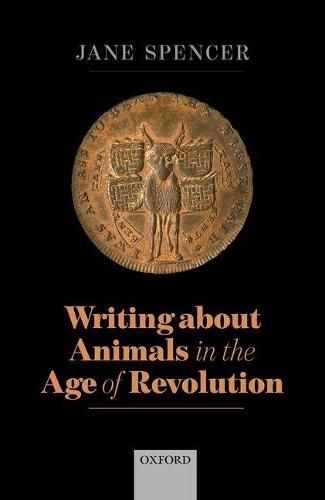Readings Newsletter
Become a Readings Member to make your shopping experience even easier.
Sign in or sign up for free!
You’re not far away from qualifying for FREE standard shipping within Australia
You’ve qualified for FREE standard shipping within Australia
The cart is loading…






This is a book about animals in literature at the time of the French Revolution. It ranges widely over different genres and writers, from Sterne’s Tristram Shandy to Wordsworth’s, Coleridge’s, and Clare’s poems, from Barbauld’s children’s stories to Wollstonecraft’s Rights of Woman, from Olaudah Equiano’s slave autobiography to Thomas Spence’s radical journal Pig’s Meat, from natural history and philosophy to parliamentary debates, from sentimental novels to John Lawrence’s chapter on the ‘Rights of Beasts’. It shows how the discussion of human rights and freedoms was bound up with the representation of nonhuman animals, and how animal rights emerged as an extension of the rights of man and woman. There are chapters on animal sympathy, children’s literature, feminism, abolition, political reform, and the anti-cruelty campaign. The special significance of donkeys, pigs, and apes is discussed, and a there is a discussion of visual propaganda with six illustrations.
$9.00 standard shipping within Australia
FREE standard shipping within Australia for orders over $100.00
Express & International shipping calculated at checkout
This is a book about animals in literature at the time of the French Revolution. It ranges widely over different genres and writers, from Sterne’s Tristram Shandy to Wordsworth’s, Coleridge’s, and Clare’s poems, from Barbauld’s children’s stories to Wollstonecraft’s Rights of Woman, from Olaudah Equiano’s slave autobiography to Thomas Spence’s radical journal Pig’s Meat, from natural history and philosophy to parliamentary debates, from sentimental novels to John Lawrence’s chapter on the ‘Rights of Beasts’. It shows how the discussion of human rights and freedoms was bound up with the representation of nonhuman animals, and how animal rights emerged as an extension of the rights of man and woman. There are chapters on animal sympathy, children’s literature, feminism, abolition, political reform, and the anti-cruelty campaign. The special significance of donkeys, pigs, and apes is discussed, and a there is a discussion of visual propaganda with six illustrations.